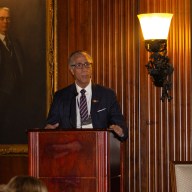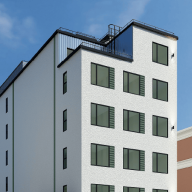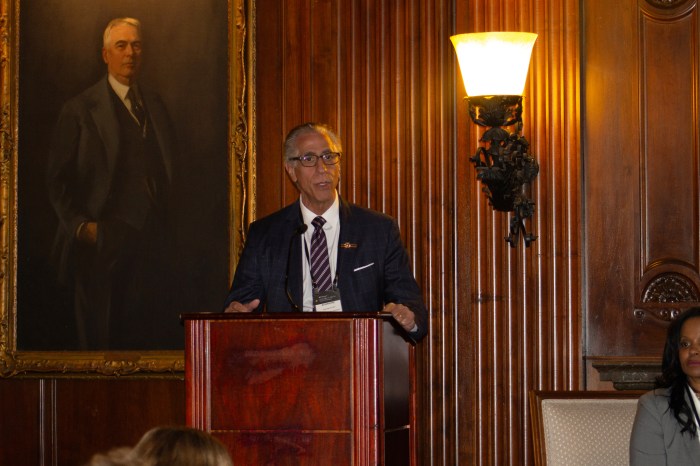Even before entering the Savoy Multi-Purpose room on the second floor of Hostos Community College, one could sense a collective outrage as activists from the South Bronx Community Association scattered along E. 149th Street chanting, “We need a community center, not a homeless shelter”, and brandished badges declaring “D.H.S.: Revitalize, not Demoralize” both forms of protest in reference to an open hearing held on September 25, regarding the creation of an “Intake Center” located on 151 E. 151st Street by The Department of Homeless Services.
Inside, the tension was palpable as representatives from Community Board 4, along with local politicians and residents, voiced their concern and anger about the proposed project’s potentially negative effect on the neighborhood to D.H.S.
Commisioner Robert V. Hess, members of the mayor’s staff, and the architect of the planned facility.
The complaints by the community board were myriad, and voiced vociferously by district manager Jose Rodriguez and board chair D. Lee Ezell. First and foremost, the community board asserted that the D.H.S. approved the building of the new intake center, which would replace a dilapidated, dingy, and dangerously overcrowded emergency assistance unit without informing community leaders or residents.
Secondly, the community board claimed that the D.H.S. was in gross violation of the City’s “Fair Share” doctrine, which essentially states that the city cannot create a facility whose size, and the population it intends to serve, exceeds the resources of the location in which it will stand. The community board asserts that not only would it be unable to accommodate an increased homeless population, but that it cannot even provide sufficient care for its current indigent citizens.
The community board feels that the D.H.S. has also overburdened and congested the neighborhood with refugees from all five boroughs for over 20 years by insisting that they come to this woefully insufficient, two-floor emergency assistance unit. Those who spoke in the open forum demanded that the D.H.S. reconsider the creation of the new intake center, especially at this critical socioeconomic juncture, when building a massive processing facility for the homeless would hinder the growth and development of a predominantly residential neighborhood that is experiencing unprecedented investments, growth, and development as a result of its proximity to the new Yankee Stadium and Gateway Center at the Bronx Terminal Market.
Ms. Ezell also wanted to make it clear that although the community opposes the D.H.S.’s current plan, they are, “willing to do their part” in the fight against homelessness and poverty, by discussing the possibility of alternative sites and reducing the size of the proposed intake center.
Commissioner Hess began his remarks by apologizing for the failures of the original emergency assistance unit. He admitted that the conditions and procedures of the EAU were both ineffective and inhumane. Mayor Bloomberg himself, upon visiting, referred to the facility as “just plain horrific.” Too often homeless individuals and families, some traveling more than an hour away from another borough in search of help, would be kept waiting for placement for countless hours, sometimes even days. In those cases, they simply slept on the building’s filthy floors, usually without cots or any form of bedding.
After conceding the prodigious failure of the EAU, Mr. Hess tried to assure all attending that the new center would be nothing like its predecessor. Citing massive improvements in processing methodology, and a more efficient structural design, Hess promised that those coming to the intake center would find placement at a D.H.S. residential facility, as well receive assistance in formulating a long-term vocational and life plan in no more than six to eight hours. The site would no longer be simply a dank depository for those down on their luck, but would devote most of its space to proactive client advocacy. The commissioner also insisted that the facility would be safe for patrons, staff, and community members due to a thorough security screening process mandated to take place on the first floor.
After Hess finished, the evening saw its most contentious moments as the architect of the proposed center attempted to give a brief presentation about its features and advantages over the current EAU.
In the end, despite the community’s obviously powerful misgivings about the D.H.S.’s vision, construction of the new intake center is scheduled to proceed as planned, with an opening in May of 2010.




















